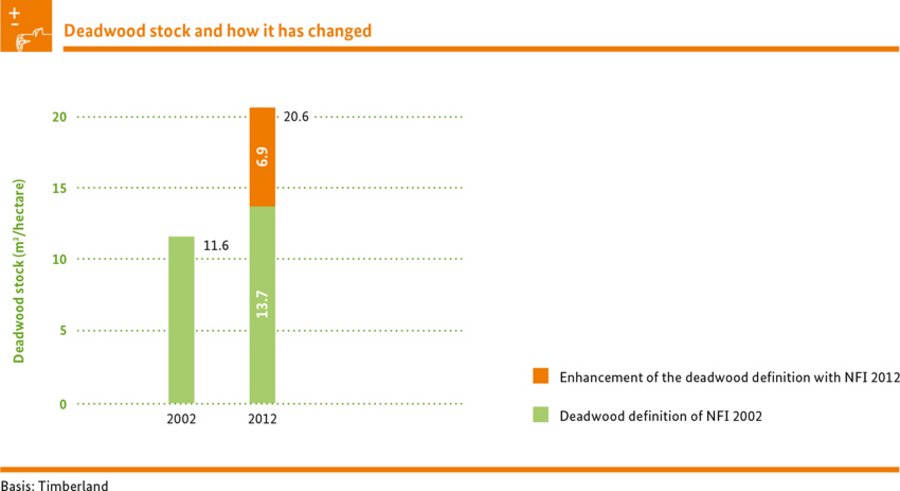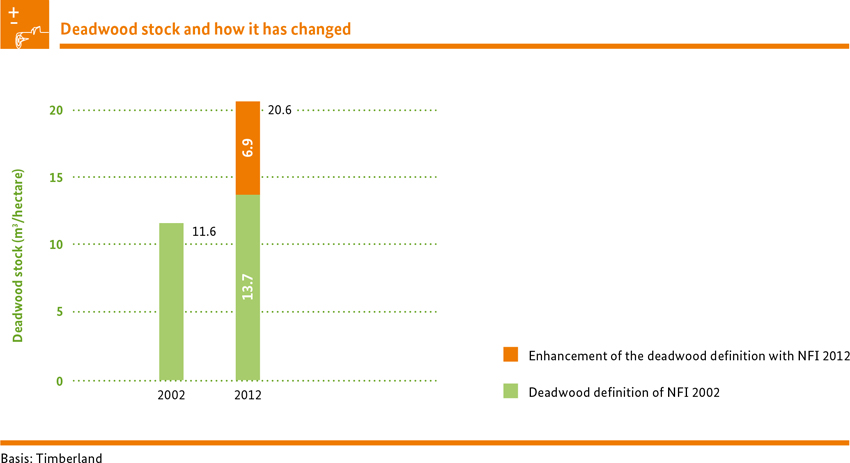Deadwood decomposes. A constant supply is needed to preserve deadwood for those species specialized in deadwood. In earlier times, most of the deadwood was removed from the forests and used to supply the population with fuel. Today, sustainable forest management practices actively strive to retain a suitable amount of deadwood to protect biological diversitity.
Annually, about one cubic metre of timber is needed to lastingly preserve a deadwood stock of 20 cubic metres per hectare (Kroiher, Franz; Oehmichen, Katja (2010): Das Potenzial der Totholzakkumulation im deutschen Wald. Schweizerische Zeitschrift für Forstwesen = Journal forestier suisse, Band 161, Heft 5, Seiten 171-180).




![[Translate to Englisch:] Totholzstamm Deadwood](/fileadmin/_processed_/e/a/csm_DSC_2093_KlausM_Weber_b02bc518d9.jpg)